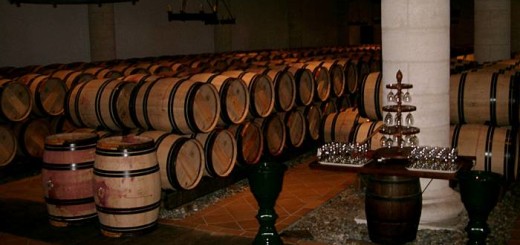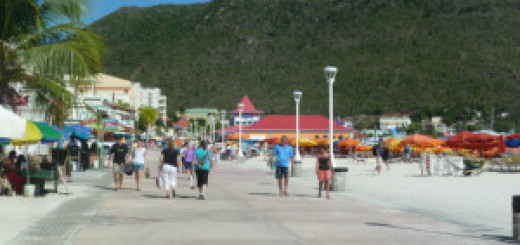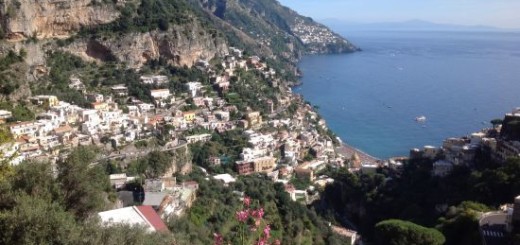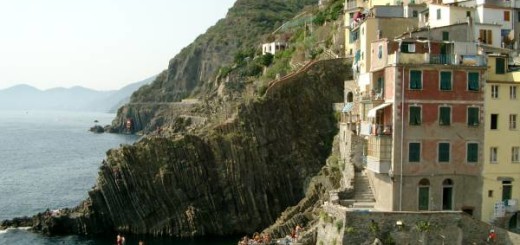Rüdesheim, the heart of the Rheingau

The first indication to us that we had arrived at Rüdesheim was the sight of the Niederwald Monument above the vast vine-covered slopes that bordered the Rhine river. Now, at last, we would get to try out the local wines which we had heard so much about. The Rheingau region produces some of Germany’s best wines, the vines having been first introduced around here during Roman times. The Rheingau is essentially the portion of the Rhine along the right bank of the river between Wiesbaden and the legendary Lorelei rock, with Rüdesheim in its centre.

Officially Rüdesheim am Rhein, it is a popular tourist town with the reputation of being a place of good cheer and hospitality, thanks to the many restaurants and wine bars. We took a ride on the little tourist train through some very narrow streets to get an overview of the town.

One tiny lane, packed with wine bars, restaurants and souvenir shops, is the Drosselgasse. Only about 2m wide in places and 144 m long, the cobblestone street is lined with historic half-timbered buildings, many in fact being restorations of those destroyed during allied bombings. The taverns there have a long tradition of playing German folkloric music and drinking songs.
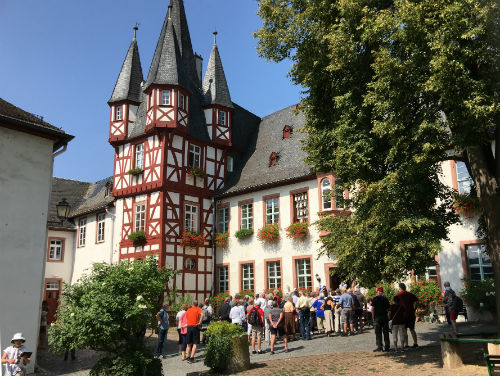
On Oberstrasse, not far from the corner of Drosselgasse stands the former 16th century home of the Brömser family which now houses the Siegfried’s Mechanical Music Cabinet. Many of our cruise passengers made sure to visit. The museum exhibits a sizable collection of musical curiosities and instruments that function like computers, ranging from tiny, delicate music boxes to an enormous orchestrion.

Instead, we took a ride on the cable car up over the vineyards to the Niederwald Monument. It gave us an opportunity to get a bird’s eye view of the town, past the Boosenburg Castle tower and over the Brömserburg Castle across the river to Bingen. The entrance to the cable car station is also on Oberstrasse.

It was fascinating to watch the workers in the vineyards going about their tasks as we silently soared overhead. It had been a very hot season and some varieties of grapes were ready to be harvested.

The cable car took us to the top of the hills behind Rüdesheim where the Niederwald Monument stands proudly symbolising the unification of Germany in 1871 following the Franco-Prussian War. Made using 32 tonnes of bronze, the 10m tall figure of Germania personifies the new nation of 25 states. The monument reaching 38m high was completed in 1883.

The Niederwald forest park was conceived as an ornamental woodland, with small buildings, a path system and lush landscaping, to capitalise on the views over the Rhine valley. It was commenced in 1794, complete with with a Manor House, a Great Hall, a ‘Magic’ Cave, an artificial ruin and a Temple (built in 1790 but rebuilt following WWII). From here the views over Rüdesheim and the river are spectacular and the park is a beautiful spot for a relaxing stroll on a warm day.

On our way back to the ship, along Grabenstrasse, we made sure to visit the vinothek (wine shop) of the most well known winery in the area – Georg Breuer. The estate was founded in 1880 and has been owned by the Breuer family for about 100 years. Grapes grown on their vineyard sites in Rüdesheim and Rauenthal, further upstream, are 81% Riesling. The different attributes of each area influence character and palate of the Rieslings – minerality and stone fruit aromas from the steep slate and quartz soil around Rüdesheim, and fine citrus aromas from the clay and gravel around Rauenthal. The Burg Rottland Grand Cru 2016, Terra Montosa 2016 and the Rüdesheim Estate 2017 all got the tick from us. But our favourites were the Rauenthal Estate 2017 and the GB Sauvage 2017 – a dry Rheingau Riesling developed in steel tanks. Other varieties grown are Pinot Noir, Pinot Gris, Pinot Blanc and two very old varieties – Orléans and Heunisch, which we did not get to taste. Of these varieties our favourite was the dry GB Rosé, from Pinot Noir grapes matured in large wooden barrels to develop the light and fruity characteristics. Georg Breuer also produce a Noble (Botrytis) Riesling in years when the rot settles in parcels of grapes. These are separately hand-picked, leaving the rest for the production of the dry wines.
Our discussion with the Georg Breuer staff member gave us a greater understanding of German wines and we looked forward to many more tastings as later that night we left the Rhine Valley and travelled onto the River Main.

